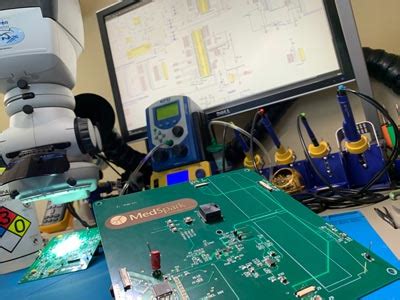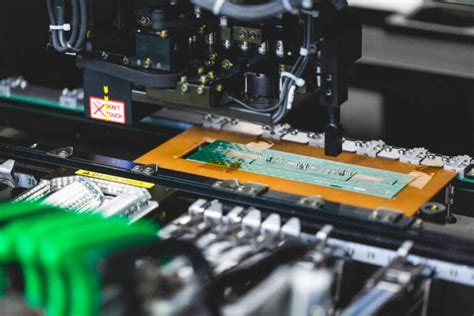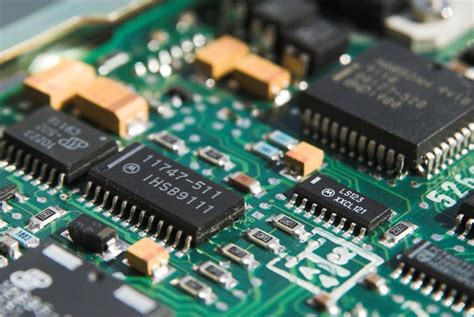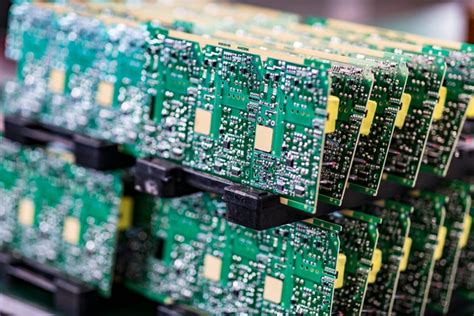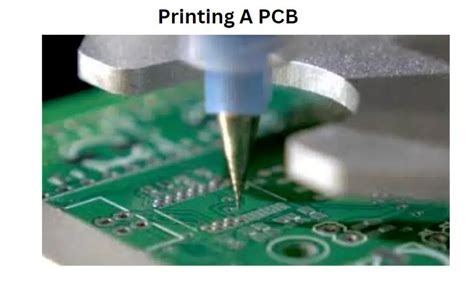Advancements in Medical Electronics Assembly Techniques

Key Takeaways
The field of medical electronics assembly has seen remarkable advancements aimed at improving the precision and efficiency of the production process. One of the most notable innovations is the integration of advanced pcb assembly techniques that streamline the manufacturing workflow. These techniques not only minimize errors in assembling complex pcba (printed circuit board assembly) but also enable manufacturers to produce devices that meet stringent safety standards. Enhanced automation has also played a crucial role; by implementing robotic systems, companies can significantly increase throughput while maintaining high levels of accuracy in component placement. It’s essential for industry stakeholders to stay updated with these advancements, as they represent a significant step forward in ensuring that medical devices are not only functional but also safe for patient use.
“Regular training and staying ahead with technology can drastically improve production quality and efficiency.”
By adopting best practices and leveraging new technologies, companies can achieve a competitive edge while contributing positively to healthcare innovations. Overall, these developments signify a promising future for medical electronics assembly, paving the way for new possibilities in medical technology.

Introduction to Medical Electronics Assembly
The field of medical electronics assembly has witnessed significant advancements, contributing to the enhanced production of vital medical devices. This process involves the meticulous integration of various components, including printed circuit boards (PCBs), which play a crucial role in ensuring the functionality of devices such as monitors, diagnostic equipment, and therapeutic tools. The trend towards pcb assembly and PCBA has fostered innovations that improve not only the efficiency of manufacturing processes but also the precision required in medical applications. With heightened attention to detail, manufacturers are now able to create assemblies that meet stringent regulatory standards while minimizing errors. Moreover, modern assembly techniques leverage automation and robotics, further elevating the quality and safety of medical electronics. This approach ensures that equipment not only functions optimally but also complies with rigorous health and safety guidelines essential in the healthcare sector. As these innovations continue to evolve, they are set to redefine medical device manufacturing, ultimately enhancing patient care through more reliable technological solutions.
Importance of Precision in Medical Device Manufacturing
In the realm of medical device manufacturing, precision plays a pivotal role. The intricacies involved in the production of devices such as pacemakers, diagnostic equipment, and imaging systems necessitate an unwavering commitment to detail. The reliance on pcb assembly techniques ensures that components are meticulously placed and soldered with extreme accuracy, minimizing the risk of malfunctions that could have severe implications for patient safety. Each layer of the pcba (printed circuit board assembly) must be flawlessly executed to ensure optimal performance and reliability in the finished product. In this highly regulated industry, even a slight deviation from specifications can lead to significant consequences, underlining the necessity for advanced machinery and robust quality control processes. Innovations such as automated inspection systems and precision soldering technologies have emerged to bolster these efforts, allowing manufacturers to achieve high standards of quality while also enhancing their throughput. Ultimately, delivering medical devices with impeccable precision not only fulfills regulatory requirements but also fortifies the trust between healthcare providers and patients, emphasizing that safety is paramount in medical electronics assembly.
Recent Innovations in Assembly Techniques
The field of medical electronics assembly has experienced significant advancements, particularly in the area of pcb assembly and pcba techniques. Recent innovations have focused on the integration of automated systems, which not only enhance efficiency but also improve the precision of component placement during assembly. A notable advancement is the implementation of advanced pick-and-place machines, which are capable of handling high-density components with extreme accuracy. These machines utilize sophisticated vision systems to ensure that components are positioned correctly on the circuit boards, minimizing errors that could impact device performance.
Moreover, the adoption of robotic automation in assembly lines has streamlined production processes, reducing cycle times and lowering labor costs while maintaining high standards of safety and quality. The use of data analytics plays a crucial role as well by enabling real-time monitoring and adjustments throughout the assembly process. This capability allows manufacturers to identify issues swiftly and implement corrective actions immediately, further ensuring optimal outcomes.
| Innovation | Description | Benefits |
|---|---|---|
| Automated Assembly | Use of machines for streamlined processes | Increased efficiency and reduced labor costs |
| Vision Systems | Advanced technology for precise component placement | Higher accuracy in placement |
| Data Analytics | Monitoring processes for real-time adjustments | Quick identification and resolution of issues |
In addition to these techniques, innovations such as enhanced soldering methods designed for increased reliability in assemblies have emerged. These are particularly crucial for ensuring that connections remain intact under various operating conditions. As a result, these advances not only bolster manufacturing capabilities but also contribute significantly to the safety and efficacy of medical devices used in healthcare settings.
The pursuit of excellence in medical electronics assembly through these innovative practices underscores an ongoing commitment to enhancing patient care by delivering state-of-the-art medical technology.
Enhancing Efficiency through Automation
The integration of automation in medical electronics assembly has revolutionized the manufacturing processes of critical medical devices. By adopting advanced technologies such as robotics and intelligent software, manufacturers are achieving unprecedented levels of efficiency and accuracy in the production cycle. One of the core components of this automation revolution is pcb assembly methods, which allow for rapid prototyping and streamlined production workflows. These innovations not only expedite the overall assembly process but also enhance quality control, significantly reducing the likelihood of human error during pcba operations. Furthermore, automation minimizes waste by optimizing material usage and aligning production rates with demand forecasts, leading to a more sustainable manufacturing approach. The continuous evolution of automated systems is pivotal for meeting stringent industry standards while ensuring that essential medical equipment can be produced swiftly and efficiently, thereby advancing patient care outcomes globally. By embracing these cutting-edge techniques, stakeholders in the medical electronics field are positioning themselves to respond effectively to market needs while enhancing operational capabilities.
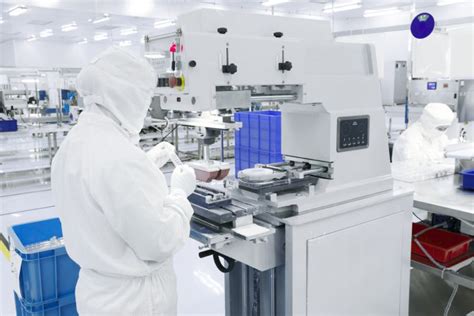
Safety Protocols in Medical Electronics Assembly
In the realm of medical electronics assembly, ensuring safety is paramount due to the sensitive nature of medical devices. Companies increasingly implement stringent safety protocols to protect not only the devices being produced but also the personnel involved in their assembly. One critical area is the adherence to industry standards, such as ISO 13485 and IEC 60601, which guide manufacturers in maintaining quality and compliance. Effective quality control measures are also essential, regularly assessing processes for potential hazards that could compromise device functionality or patient safety.
Furthermore, advances in pcb assembly techniques have contributed significantly to enhancing safety measures. For instance, automation technologies can minimize human error by employing robotic systems for delicate tasks, leading to greater precision and reliability in pcba operations. Additionally, training programs that focus on safe handling procedures and equipment usage help ensure that employees are well-informed and vigilant while working on intricate assemblies. This holistic approach not only safeguards the production environment but also reinforces the integrity of medical devices—ultimately enhancing patient care and expected outcomes.

Case Studies of Successful Advancements
In recent years, numerous case studies have illuminated the progress achieved in medical electronics assembly, particularly emphasizing pcb assembly techniques. One exemplary case involved a company that integrated advanced automation in its pcba process, dramatically reducing lead times while maintaining rigorous quality controls. The automation enabled real-time monitoring, ensuring that any deviations were swiftly corrected. Another noteworthy instance pertains to a collaboration between several healthcare technology firms that led to the development of a modular medical device platform, streamlining the assembly process and enhancing flexibility for custom configurations. These innovations not only improved production efficiency but also resulted in devices with improved reliability, ultimately benefiting patient care. Additionally, implementing smart manufacturing techniques has demonstrated significant improvements in worker safety during the production of sensitive electronics. By focusing on these successful advancements in medical electronics assembly, the industry is paving the way for future technologies that promise even greater precision, efficiency, and safety in healthcare applications.
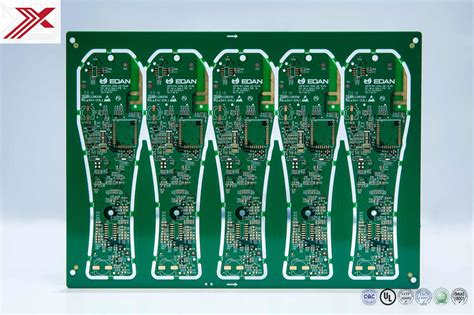
Future Trends in Medical Electronics Assembly Techniques
As the medical device industry continues to evolve, the trends in medical electronics assembly are increasingly leaning toward advanced methodologies that ensure greater precision and efficiency. One significant trend involves the adoption of automated systems, which facilitate high-speed pcb assembly processes, reducing human error and increasing productivity. Innovations such as smart assembly lines equipped with real-time monitoring systems allow for continuous quality control, ensuring that every unit produced meets stringent safety standards.
The integration of artificial intelligence and machine learning in pcba processes is also paving the way for customized assembly techniques that can adapt to varying designs and specifications seamlessly. This adaptability not only enhances the manufacturing process but also meets the rising demand for personalized medical devices. Furthermore, 3D printing technologies are emerging as a key player in the production of complex components with intricate designs, resulting in lighter devices that do not sacrifice performance.
Moreover, sustainability is becoming an essential consideration in assembly techniques. Manufacturers are increasingly focusing on eco-friendly materials and processes, aiming to minimize waste production during medical electronics assembly. Such initiatives not only contribute to environmental preservation but also align with regulatory expectations for greener manufacturing practices.
Overall, these trends signify a robust shift toward innovative practices that maximize efficiency while maintaining exceptional levels of precision, ultimately leading to safer and more effective medical devices for patients worldwide.
Conclusion: The Impact on Healthcare Technology
The ongoing advancements in medical electronics assembly techniques are revolutionizing the landscape of healthcare technology. With the integration of state-of-the-art pcb assembly processes and sophisticated pcba methods, manufacturers are now capable of producing more reliable and effective medical devices. These innovations enable heightened levels of precision, which is crucial in the manufacturing of life-saving equipment. Moreover, the automation incorporated into these assembly techniques not only enhances productivity but also significantly reduces the risk of human error. Safety remains a top priority; thus, implementing rigorous safety protocols within the medical electronics assembly process ensures that devices are not only high-performing but also compliant with industry standards. As these advancements continue to evolve, they promise to improve patient outcomes and streamline operations across healthcare facilities, ultimately solidifying their vital role in modern medicine.
Conclusion: The Impact on Healthcare Technology
The advancements in medical electronics assembly techniques, particularly in pcb assembly and PCBA, are revolutionizing the landscape of healthcare technology. As manufacturers adopt new innovations in their assembly processes, they are able to achieve a higher level of precision, which is critical in the production of complex medical devices. The integration of automated systems not only enhances the overall efficiency of production but also reduces the likelihood of human error, thereby improving patient outcomes. Furthermore, robust safety protocols implemented during these advanced assembly processes ensure that both the devices and personnel are protected, contributing to a more reliable healthcare environment.
Moreover, case studies demonstrating successful advancements illustrate how these techniques have led to significant improvements in device functionality and reliability. As we look ahead, it is clear that the trends emerging from current innovations will pave the way for even greater developments in the healthcare sector. In summary, the evolution of medical electronics assembly showcases a compelling commitment to enhancing device manufacturing processes that not only meet stringent regulatory standards but also respond to the critical needs of modern healthcare delivery. The continuous refinement of these techniques will further solidify their role as essential cornerstones in advancing medical technology.
FAQs
What is pcb assembly in the context of medical electronics?
PCB assembly, often referred to as PCBA, is the process of assembling electronic components onto a printed circuit board. In medical electronics, this process is crucial as it ensures that devices function correctly and meet stringent healthcare standards.
Why is precision important in pcba for medical devices?
Precision in pcba for medical devices ensures that components are accurately placed and function reliably. Any discrepancies can lead to device malfunction, potentially compromising patient safety.
What recent innovations have improved medical electronics assembly?
Recent innovations include automated inspection systems and advanced soldering techniques. These advancements not only enhance the quality of the assembly but also improve the overall efficiency of producing complex medical devices.
How does automation enhance efficiency in medical electronics assembly?
Automation streamlines production processes, reduces human error, and increases throughput. With automated systems, manufacturers can achieve higher consistency and speed in pcb assembly, which is critical for meeting increasing demands.
What are essential safety protocols during pcba?
Safety protocols include adhering to strict environmental controls to prevent contamination and utilizing fail-safe mechanisms during assembly. These practices protect both workers and patients by minimizing risks associated with faulty equipment.

